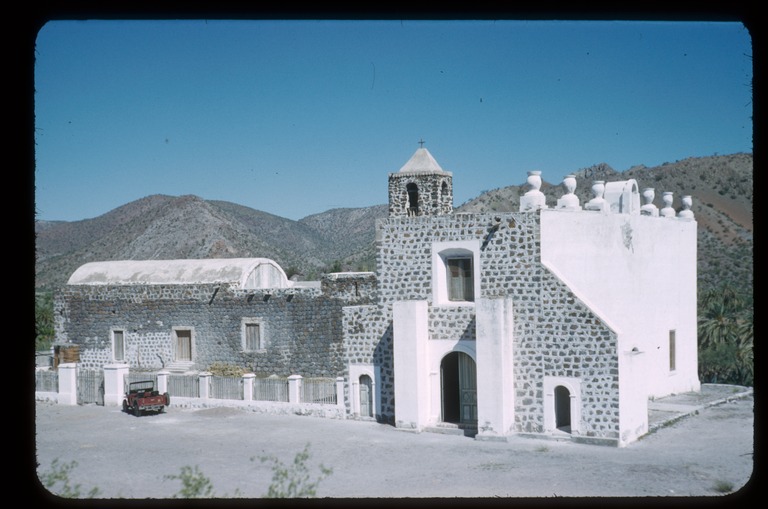By David Kier
1705 was an ambitious year for the Jesuits, the Catholic Order who had the ambitious hope to Christianize a new land for the King of Spain, Philip V. Following the establishment of the first two California missions at Loreto (1697) and San Javier (1699), the Jesuits had the financing and priests available to establish two more missions. On November 21, 1705, Padre Manuel de Basaldúa left Loreto for Mulegé where a rare desert river emptied into the sea. Using a financial pledge of support from Nicolás de Arteaga and his wife, Josefa de Vallejo, the Basque Jesuit Basaldúa was able to build the fourth mission in the land called California, a land most believed was an island. The mission was named Santa Rosalía de Mulegé.
Flash floods are nothing new to Mulegé and were a major issue when they destroyed the mission lands in 1717. In 1757, a new church made of stone was constructed in 1766 on a ledge high above the damaging river. Just four years later, flash floods again took out the croplands.
The Jesuits were removed from all their missions at the close of 1767. King Carlos III received reports that the Jesuits were hording pearls, silver, and gold. These rumors would later prove to be false, but sadly not until the damage was done. Junípero Serra led the Franciscan padres in reoccupying the California missions, now numbering fourteen.
In 1770, another destructive flash-flood ravished the Mulegé mission farms. Padre Francisco Palóu considered moving the mission to a place known as Magdalena, about 15 miles northwest. Ruins of an aqueduct can be seen carved into the cliff that once led to several stone and adobe ruins of unknown origin. These were all washed away in a 2014 flash flood that widened the Arroyo Boca de Magdalena.
In 1773, the Franciscans were busy in Alta California building new missions. They agreed to allow the Dominican Order to take over the Baja California missions and left considerable distance from their first mission, San Fernando de Velicatá to their next mission at San Diego Bay, in Alta California. It this gap, the Dominicans would add nine new missions.
As was the case in most of the peninsula, diseases introduced by Europeans and mainlanders devastated the local Native population, nearly eliminating the purpose of the missions. Mexico also achieved independence from Spain and the people in both Californias accepted the change in 1822. The Dominicans convinced the new Mexican government that the Indians who remained still needed the missions. A deal was made that the missions could remain open until they were either abandoned or their padre died. Mission Santa Rosalía de Mulegé was abandoned in 1828 but continued on as a church for the newly arrived mainland residents.
Thanks to David Kier for writing this guest post. David is a veteran Baja traveler, author of ‘Baja California – Land Of Missions’ and co-author of ‘Old Missions of the Californias’. Visit the Old Missions website to add to your reading list. He also has a Facebook group for Baja California missions.









Great site! Thank you for sharing this helpful information. Happy travels 🙂
Thanks, Rebekah!